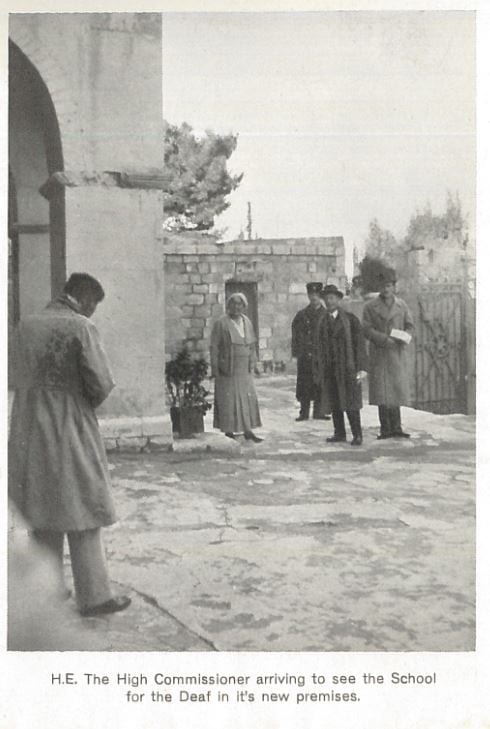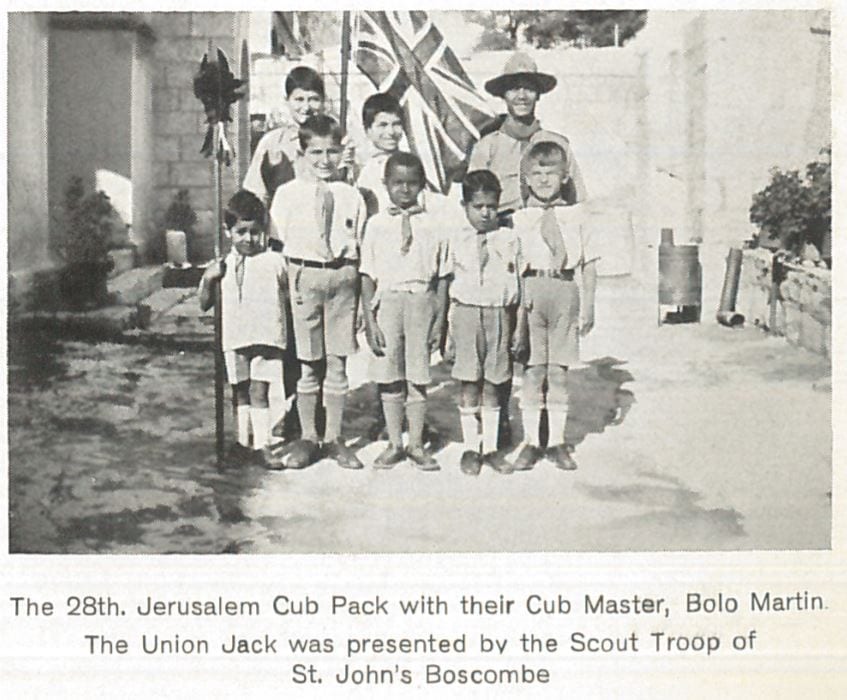The ‘Thankful Hearts League’ School for the Deaf, Jerusalem, 1931-? – “This is a wonderful place, here little devils are turned into angels”
By H Dominic W Stiles, on 12 April 2019
Having previously covered Mary Chapman and her missionary deaf school work in south Asia, we recently mentioned her Jerusalem school in relation to the beginnings of Israeli Sign Language. Chapman raised funds through the “Thankful Hearts League” to found a mission school for the Deaf in Jerusalem, and started the school in 1931 according to Höxter (p.118). He continues,
Until now it has had but few pupils, mostly native Arab children, who receive their instruction in the English language from the directress in a small congenially arranged dwelling house. The school has a homelike atmosphere; the lovable directress cares for her small charges with affection and devotion. She has taught the deaf for thirty years in many lands. One of her former pupils from Burma instructs the children in manual training and drawing. With the younger children the method of instruction depends mainly upon observational activity, seeking to direct attention to training in lip-reading. Speech instruction is carried on by the single-sound method. The school should grow in the near future.
 Chapman had the help of her long-time colleague Miss Martin, and the Burmese Deaf young man, Bolo. She appears to have written regular newsletters to her Thankful Hearts League supporters in the U.K., and they must have assisted with both money and material items such as clothes. In 1937 the school had a visit for Sir Arthur Wauchope the High Commissioner, who gave £10 for the school.
Chapman had the help of her long-time colleague Miss Martin, and the Burmese Deaf young man, Bolo. She appears to have written regular newsletters to her Thankful Hearts League supporters in the U.K., and they must have assisted with both money and material items such as clothes. In 1937 the school had a visit for Sir Arthur Wauchope the High Commissioner, who gave £10 for the school.
The school taught the boys with lipreading, and they learnt to lipread both English and Arabic. She says in the 1938 newsletter, “There are some sounds in Arabic which seem almost impossible to lip read, or to get a born deaf child to say, but we are persevering !!!”

 Further on she tells us this story –
Further on she tells us this story –
Two of the Sergt. Majors came to our help one Sunday morning, when a Moslem man brought his little son to our School. The Matron of the Government Hospital most kindly said she would take the boy, give him a carbolic bath, and get the Doctor to examine him, before we admitted him to school. Miss Walden and I were so relieved, as we were alone with the boys, all the others having gone to Church, but our joy was short lived, for the telephone went, and the Matron said she was sending Ally back, as his screams, and kicks were frightening all the patients, many of whom were seriously ill. We knew that once the father had left, Ally would settle down happily with the other boys, so I went next door, and these two Sergt. Majors gladly came in, took the boy from his father, and gave him a bath. The Matron sent an Arab policeman from the hospital to help the father bring the boy back to school, for the poor man could do nothing with his son, and he is only seven years old . The policeman asked to see the school, and was amazed to see such a happy well behaved number of deaf and dumb boys!! and great was his astonishment when the boys spoke to him in Arabic, and answered the questions he asked them ; he went away saying “This is a wonderful place, here little devils are turned into angels”.
 The school was still going in 1948, as Miss Mary F. Chapman’s School for the Deaf and Dumb, at 135 St. Paul’s Road, Jerusalem. I wonder if the school closed with the crisis that saw war in Palestine and the creation of the state of Israel? If you have any information, please add it below. I include the 1937 newsletter as a picture, and the 1938 one as a pdf. If there are other newsletters surviving, it would be nice to know.
The school was still going in 1948, as Miss Mary F. Chapman’s School for the Deaf and Dumb, at 135 St. Paul’s Road, Jerusalem. I wonder if the school closed with the crisis that saw war in Palestine and the creation of the state of Israel? If you have any information, please add it below. I include the 1937 newsletter as a picture, and the 1938 one as a pdf. If there are other newsletters surviving, it would be nice to know.
As usual, click onto smaller images for a larger size view.

Höxter, Richard, The Deaf and Provision for Their Education in Palestine. American Annals of the Deaf Vol. 82, No. 2 (March, 1937), pp. 117-121
 Close
Close

